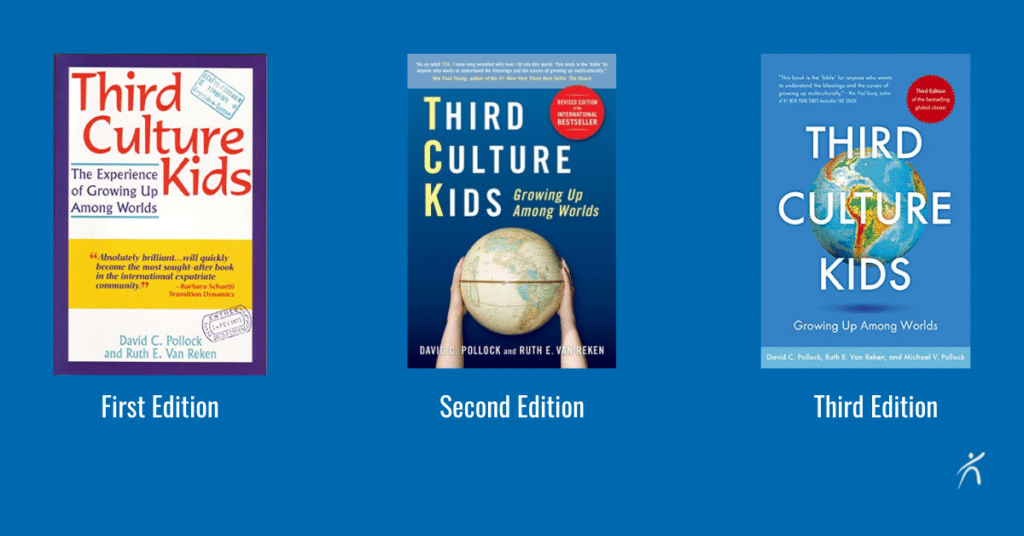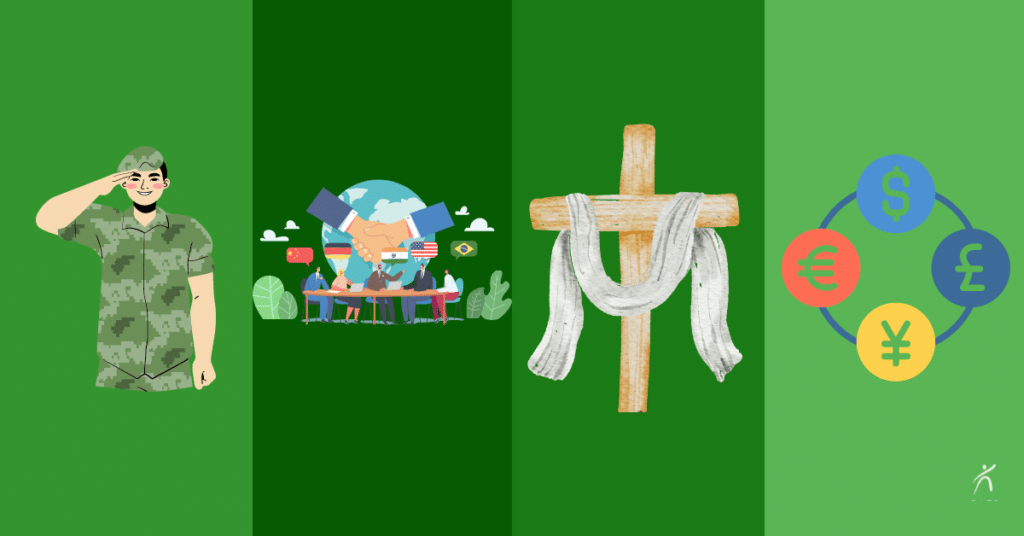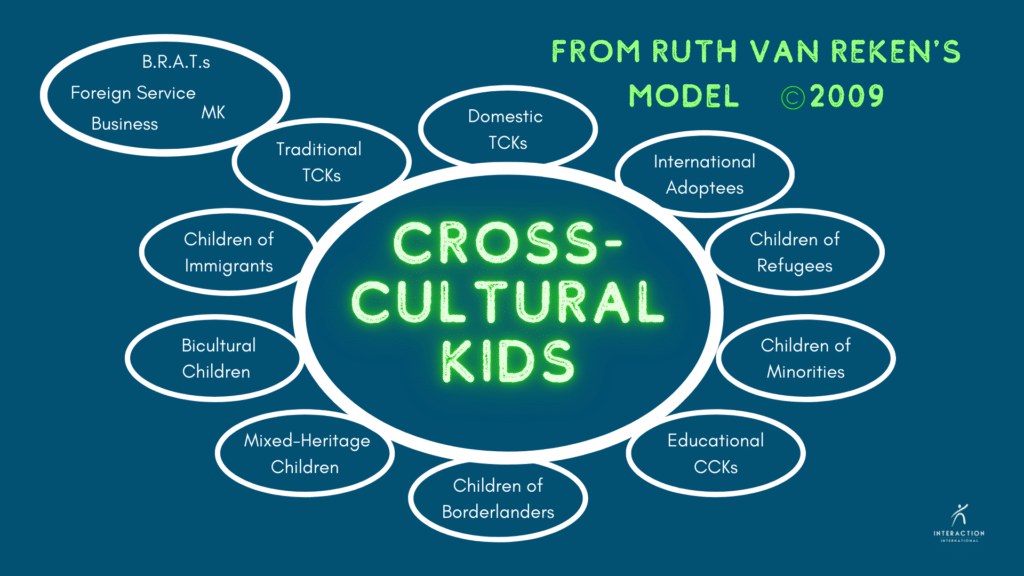Third Culture Kid Definition
The Third Culture Kid definition is both easy and difficult. The words are easy to understand, but the concept is a little more difficult to wrap one’s mind around. We all know that the more precise our language is, the better we are understood. We also know that language can be ambiguous. No matter how hard we try to communicate well, there’s always opportunity for misunderstanding.
Our website uses some words–and their abbreviations–frequently. In fact, we’re all about some of those abbreviations, especially TCK and MK. In order to make understanding easier, let’s delve into the abbreviations and terms most frequently used on Interaction International’s website. Specifically, let’s look at the Third Culture Kid definition.
TCK
TCK–it’s everywhere Interaction International is. TCK is an abbreviation for Third Culture Kid. Some days it feels like this is the most misunderstood abbreviation in the history of misunderstood abbreviations. Let’s delve into it’s origins and take a look at who a TCK is and isn’t.
Dr. Ruth Hill Useem
The term Third Culture Kid (TCK) was coined by Dr. Ruth Hill Useem of Michigan State. Initially, with her husband, John Useem, she studied how business people from the USA would interact and conduct business with their Indian counterparts across what might be a real cultural divide. They realized these people operated in a world that was neither like life would have been in the USA (the first culture*) nor how it was in the local Indian (or second*) culture but it was a space between those two worlds where they met to do business together. The Useems called this interstitial space the third culture.
Dr. Useem also observed that the children of these expatriates had some different characteristics than her students at Michigan State. While life for them wasn’t how they would be living back in the USA nor how the Indian nationals around them were living, they were, in fact, living in a similar way to other expatriates. What particularly intrigued her was how those from different nationalities and sectors who were in India for a career choice rather than as immigrants shared this ‘interstitial space’—this world between worlds that she and her husband, John, called the third culture.
Dr. Useem named this group Third Culture Kids. She said, “In summarizing that which we had observed in our cross-cultural encounters, we began to use the term ‘third culture’ as a generic term to cover the styles of life created, shared, and learned by persons who are in the process of relating their societies, or sections thereof, to each other. Simply put, TCKs are: ‘Children who accompany their parents into another society’.”
Dr. Useem dedicated her career and her retirement to studying TCKs, their schools, their communities, and their relationships. Her foundational work first introduced the term “Third Culture Kid” in the Journal of Social Issues (1967) in an article titled, “The interfaces of a binational third culture: A study of the American community in India” formed a platform for many others to build upon and expand the general understanding of this distinct people group.
*Initially, Dr. Useem called Indian culture the first culture and American culture the second culture.
David C. Pollock, Ruth Van Reken, and Michael V. Pollock

David Pollock’s name is often associated with the term TCK. Although he didn’t coin it, he was one of the best known proponents of the term in the twentieth century. Many forget that his work was based on Dr. Useem’s studies and publications.
In the mid-late 1970s Dave and his wife, Betty Lou, moved their family to Kijabe, Kenya. They served as boarding home parents for adolescent boys while Dave taught at Moffat Bible College. During this time Dave learned from Dr. Useem’s work. In Kenya, he started honing the definition of a TCK and developing the idea of a “flow of care” for TCKs. Later he and Ruth Van Reken, a TCK herself, would refine the definition and it would become the most widely used definition of a TCK. Their book “Third Culture Kids: The Experience of Growing Up Among Worlds” became the bible of those working with TCKs.
In 1989 they defined a TCK as “a person who has spent a significant part of his/her developmental years outside the parents’ culture. The TCK frequently builds relationships to all of the cultures, while not having full ownership in any. Although elements from each culture may be assimilated into the TCK’s life experience, the sense of belonging is (often) in relationship to others of similar background.” This was the seminal definition until 2017.
A third edition of the book “Third Culture Kids: The Experience of Growing Up Among Worlds” was released in 2017. It was co-authored by Ruth Van Reken, co-author of the first two editions, and Michael Pollock, Dave’s son. Trying to clarify the original group Useem studied, they updated the definition of a traditional Third Culture Kid in this edition. The redefined definition is as follows: “a traditional third culture kid is a person who spends a significant part of his/her first eighteen years of life accompanying parent(s) into a country or countries that are different from at least one parents’ passport country(ies) due to a parent’s choice of work or advanced training.”
The idea behind the definition change was to allow for further research about the original group Useem studied. The new definition allows for comparing and contrasting the traditional TCK with other ways that children grow up cross-culturally, including domestic TCKs who move between different cultural communities within their own country.
Norma McCaig and the Global Nomad
This revision strongly echoes the work of Norma McCaig, another TCK, who coined and popularized the term Global Nomad in the early 1980s. Her definition of this people group is: “a person of any age or nationality who has lived a significant part of his or her developmental years in one or more countries outside his or her passport country because of a parent’s occupation.” The term Global Nomad is often used interchangeably with Third Culture Kid. As you look at the development of the Third Culture Kid definition, you can see a lot of overlap with the definition of a Global Nomad.
The Four Traditional Categories of TCKs

Now that you know the basic history of the development of the term TCK, knowing who fits the traditional Third Culture Kid definition would be appropriate. Traditionally, there are four major categories of TCKs. They are as follows: military BRATs, the children of missionaries (MKs), those whose parents work in the Foreign Service, and those whose parents move their families abroad to work in international business.
Military BRATs
First of all, BRAT is not a derogatory term. It is an acronym that stands for British Regiment Attached Traveler. The British empire created TCKs before the American Revolution when they would send whole families to accompany military personnel to an overseas posting.
While all of the children (British or otherwise) of those serving in the military are referred to as BRATs, not all BRATs are TCKs. High mobility characterizes both TCKs and BRATs. However, many of those military dependents do not move cross-culturally. Even some who move internationally never leave the cultural bubble created by a military base. For American military BRATs it is increasingly rare for families to have the option of moving to an overseas post. Reducing costs and dangerous situations for loved ones means many military families often endure long separations in place of high mobility. Only those who do move internationally and leave their cultural bubble become TCKs.
Kris Kristofferson, the legendary singer, songwriter, and actor, is a BRAT. His father served in the US Army Air Corps, the precursor to the United States Air Force. Kristofferson and General Norman Schwarzkopf, another army BRAT, narrated BRATS: Our Journey Home, a documentary about growing up with parents who serve in the military.
Missionary’s Kids
Missionary’s Kids may be the most well known and studied group of TCKs. They are the group most often referred to as MKs. Traditionally, they have been called “Missionary Kids.”
The term Missionary Kid can be confusing. To some, it implies the child is a missionary in their own right. While it’s true some MKs are missionaries, not all are. Assuming a vocational calling for a child based on the parents’ calling is unfair. It places a burden on the child that is not theirs to carry.
MKs are the children of missionaries, therefore, it is more accurate to call them Missionary’s kids.
MKs of American and European descent came to mind for generations of people when they heard the term, “MK.” Today, however, most missionary’s kids are not from these countries. South Korea, Brazil, Nigeria, and India are among the many nations that send missionaries and their families cross-culturally. The faces of MKs are changing to represent more and more people groups.
Foreign Service Dependents
The children of Foreign Service Officers–those working in embassies and consulates–are another subset of TCKs. They are sometimes referred to as Foreign Service BRATs. They can also be called diplobrats or diplomat kids. Whatever you call them, they share the Third Culture Kid experience with the BRATs, MKs, and business kids.
The frequency of their moves lies between that of the military and missionaries. Normally, the diplomatic corps is reposted every two to four years. Two year postings characterize the start of a diplomat’s career. As seniority is earned, postings lengthen.
Foreign Service dependent children often live inside what is called “the Expat Bubble.” While they may explore and interact with the local culture of a posting, most diplobrats are often more isolated from it as a means of protecting them from more dangerous situations and from being used as a pawn in international relations.
International Business Kids
This group’s parents usually work for multinational corporations, although some decide to move cross-culturally and open businesses on their own. They move around the world on a regular basis as their parents’ expertise is needed in a different office of the corporation. Often, these “Biz Kids”, or BKs, live in a community with other expatriates, attend international schools, and don’t develop deep relationships outside of their expat circles.
International Business Kids, like other TCKs, are expected to return to their parents’ country of origin, frequently referred to as the home country. Unlike other TCKs, this group receives very little intentional attention and support from those who have sent them abroad when they return. The well-known resources in the other TCK communities rarely cross over to this group. While they may have more financial resources at their disposal, they don’t have the emotional and practical support others have.
Non-Traditional TCKs
Domestic TCKs
The four groups covered above are the main groups that comprise traditional TCKs. There are others who live in the space between cultures. One of the larger groups of these interstitial dwellers are the Domestic TCKs. These kids never need to use their passports to cross cultures. They move from distinct cultural group to distinct cultural group within the borders of their own nation.
Many TCKs from India fall within this category because it is a common occurrence there. If you think of every state within the nation of India as a separate country, it is easier to understand this concept. Due to significant differences in food, language, traditions, and religions within India, moving across the country mirrors moving internationally. Dr. John Barclay and Remo Ragland expounded on this concept in an interview with Bret Taylor and me that you can watch here.
Educational TCKs
The idea of Educational TCKs as another branch on the TCK family tree is gaining popularity. There are two distinct groups referred to by the same name. The first are those whose parents serve in international educational institutions. It can be argued that they fall traditionally in one of the other categories of TCKs with at least one parent who is a missionary, foreign service officer, or active military personnel. However, there seems to be a growing body of research distinguishing these TCKs as a distinct group; they are distinct enough from the other groups that they warrant attention as their own branch on the TCK family tree.
Another group who are confused with TCKs are those kids straddling different worlds because of their education. They are from the local culture, but attend the international school in their city. Dan Egeler, former president of the Association of Christian Schools International often referred to the schools this group attends as “TCK factories.” These students have also been called Educational TCKs.
Although they fit best in the space between these cultures–the interstitial space of the Third Culture–they are not TCKs. Generally, they lack the high mobility associated with their parent’s choice of job or education that is a hallmark of the other branches of the TCK tree. but they can relate to many other aspects of the Third Culture. Ruth Van Reken says this branch fits better in the Cross-Cultural Kids’ family tree.
Cross-Cultural Kids

Cross-Cultural Kids (CCKs) are a large group of those who belong to multiple cultures. TCKs—all of them—are a subset of this bigger group. This group was identified by Ruth Van Reken in the second edition of Third Culture Kids: The Experience of Growing Up Among Worlds.
Ruth met so many who identified with a great deal of the TCK experience, but felt excluded by the definition of a TCK. She defines CCKs as children who grow up among different cultural environments for any reason. CCKs include the following:
- TCKs
- Multi-ethnic and Multi-racial children
- Children of refugees
- Children of immigrants
- Children of minorities
- International adoptees
- Children of borderlands
- Others
Many CCKs overlap with their TCK cousins on issues of identity and belonging. These core pieces of being give all CCKs hooks to hang each others’ information on. For example, most of these children know what it’s like to be different from the culture that surrounds them. They also know what it is like to not fully belong to any of the cultures around them.
They may look different. They may think differently. They may speak different languages at home than they do when they’re out and about. They may experience all three differences or only one at a time. However, they, as a people group, know the reality of not belonging to any other group in significant ways.
Beyond the Third Culture Kid Definition
A Third Culture Kid is so many things! Sociologist Ted Ward once commented that TCKs “were the prototype citizens of the future.” As globalization makes cross-cultural life more common, we see this lived out in our communities. For example, the North Kansas City, MO school district’s students speak at least 118 different languages between them.
TCKs are a growing people group. While it’s hard to pinpoint exactly how many people are TCKs, it’s estimated that there are 230 million people who could call themselves TCKs. If they were to claim a place on the globe as their own and all move there, TCKs would become members of the 5th largest nation in the world.
A TCK is likely to be bilingual; 85% of them are. A TCK is likely to have made their first international move before the age of 5. TCKs on average live in 4 different cities. A final fun fact is that 44% of TCKs earn an advanced degree by the age of 22. TCKs are an impressive group!
The Third Culture Kid definition stymies many. It’s still being refined and debated in academic’s and practitioner’s circles. In the midst of finding all the words that matter–and their attendant nuances–the most important thing to remember is that a TCK is a person. The rest is always intriguing and occasionally perplexing. In the end, we know cultures by the people who belong to them. May we always see the person.
Coming Up
As one might expect, TCKs are a misunderstood group. Most of us associate culture and geography. However, the Third Culture has no specific geography other than the planet.
Many have attempted to graphically represent the Third Culture. Most have done so poorly. In the next part of this series on understanding TCKs, Bret Taylor will share from his collection 6 Flawed TCK Diagrams that he’s found over the years. He’ll explain why each diagram does not work. He’ll also throw in some middle school math lessons as an additional way of understanding the TCK.
Get ready to dive into Bret’s file of bad graphics representing TCKs. Don’t worry—we protect the guilty! The Third Culture Kid definition contains words that are not always easy to understand. Explaining those words graphically will help increase the nuances of understanding when it’s done correctly.
Part 2: 6 Flawed TCK Diagrams – by Bret Taylor
This post was written by Sheryl O’Bryan. She serves the TCK community at Interaction as the Director of TCK Services, the Director of STAGE, and the Director of Communications. Sheryl can usually be found at one or two of the TCK Connects during the week. She has a degree in coaching and is usually open to taking on new TCK coaching and mentoring clients–especially teens.


Hello,
Could you please share references to the assertion that there is ” 230 million people who could call themselves TCKs.”
Thank you